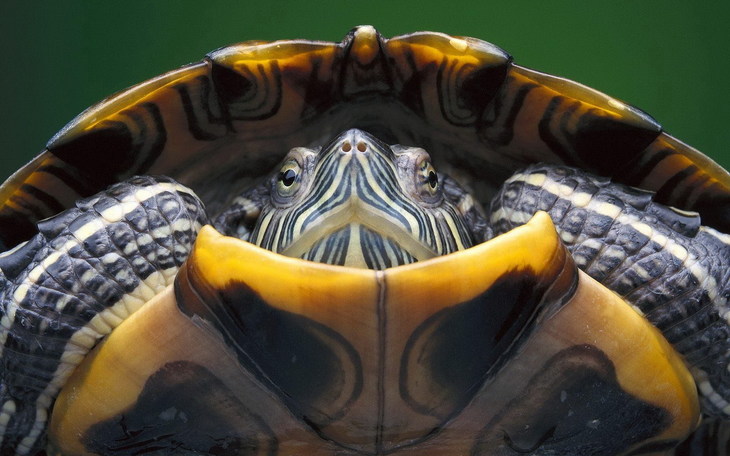
Eastern populations have a yellow spot behind their eye which is the most recognizable particular for identification in the field; juvenile turtles have vivid yellow markings. Vertical yellow bands streak the carapace (top of shell), while the plastron (bottom of shell) is mainly yellow. Older turtles tend to lose these patterns and become darker and harder to identify. Sliders are also distinguishable from other turtles by their rounded lower jaw; all other groups of turtles have flat jaws, according to Aetapet.com. In addition, sliders are often more extremely domed than cooters. Sliders range from 5 to 12 inches (12.5-30.5 cm) in carapace length.
General Info
Feeding/Diet: Juveniles mainly take advantage of aquatic pests, while adults are primarily herbivorous.
Activity/Behavior: This types is one of the most noticeable basking turtles throughout its variety. They beware baskers and slide into the water whenever disrupted. These turtles are often found on land, and females are most frequently experienced in spring while they are searching for a nesting site.
Habitat/Range: Sliders are not very specific about the aquatic environments they inhabit, however prefer rivers, ditches, lakes, and ponds.
Recreation: Nesting takes place in late spring or early summertime near water. Nests generally contain 4 to 12 eggs, and some hatchlings will overwinter in their nests.
Miscellaneous: Another sub-species, the red-eared slider, is a typical aquarium pet. They have actually been launched and become established in areas outside their native range, where they often out compete native turtle species.
Read more about Yellow-Bellied Slider here: https://aetapet.com/yellow-bellied-sliders/









